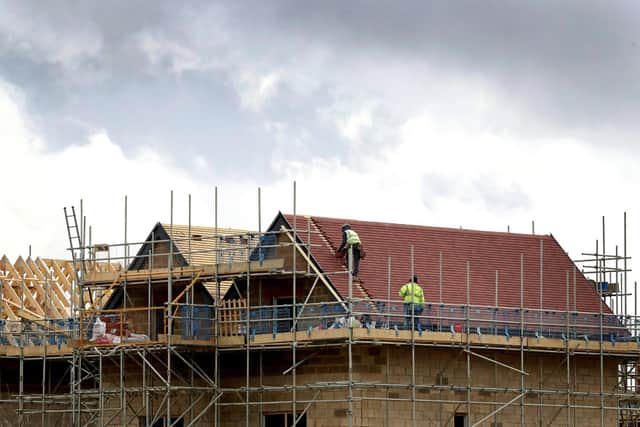Local planning policy is effectively broken and simply not bringing forward sufficient new homes of the right kind - Andy Brown
Unless, of course, the word is simply inserted into the policy as a piece of decoration and it doesn’t mean what most people would assume it means. Take out the word sustainable and the actual policy becomes much clearer. There is a presumption in favour of development.
If someone applies to develop a housing estate on a green field at the edge of a community the planners who make the decision are required to begin by assuming that is the right thing to do.
Advertisement
Hide AdAdvertisement
Hide AdShould any development be given the go ahead then local residents have no right to appeal against the decision. Only if there is a legal flaw in the decision making process can they use the extremely costly method of a judicial review. If on the other hand the scheme is rejected then the developer can appeal and if successful they can get back all their costs.


Should that appeal be dismissed by government inspectors that is not the end of the matter. All that the developer has to do is to change the design slightly and they can resubmit the proposal. Again and again.
Most reasonable people would recognise that it is important to build new housing that meets the needs of the community and that it isn’t always easy to please everyone even when siting developments that are on balance much more positive than negative. Those same reasonable people would also expect their elected representatives to be able to make a fair judgement about whether there is indeed sufficient gain for the community. Often they can’t.
It is not, for example, open to the members of a planning committee to decide that all new homes in their community should be designed sustainably. Technologically and economically it is now quite straightforward to design homes that generate more power than their owners are likely to consume. When building new homes it is relatively cheap and easy to fit the right combination of solar panels, battery storage units, heat pumps and high specification insulation.
Advertisement
Hide AdAdvertisement
Hide AdConstructing homes in this way puts a few thousand pounds on the construction cost which the developer can recoup from the sale price. With the current price of energy, the owner of the new home is highly likely to find that they are paying a lot less on the extra mortgage costs than they would have paid out on their gas and electricity bill.
Yet any planning committee that tries to routinely insist on such a high standard of sustainability will struggle to comply with local plans and the national planning policy framework. If they turn down a scheme because it isn’t sufficiently sustainable they are highly likely to be taken to appeal and have to pay out costs at the expense of the local community they are seeking to represent.
Much the same applies if the planners try to insist that new homes in their area must all meet the local needs. If they go through a very long and expensive process local authorities can write a local plan that specifies what kind of buildings can be constructed and where they will go. They are not free to write those policies. They can only do so after a lengthy and very costly process of challenge which usually results in a decision that only a minority of the homes that are built in the locality will fall within a somewhat strange definition of affordable homes.
Frequently this means that for every hundred houses built in an area, only thirty of them will be designed to respond to the needs of those who are struggling to afford a home. The other 70 will usually be built to achieve the maximum sale value regardless of what is needed locally.
Advertisement
Hide AdAdvertisement
Hide AdIn areas like the Dales or in popular coastal communities this can often mean that new housing is built on some of the green fields that help to make the area so attractive and quickly gets sold to people who live many miles away who can easily afford to purchase a second home for holidays or investment. Local people on a local salary have to watch the new housing estate being erected knowing that they will never be able to afford to buy one of the properties and that very few of the new residents will bring their children up in the area and help sustain local schools and local services.
It has become extraordinarily difficult for local councillors to insist that what is developed in their area meets the local need and even harder for them to get what is built to be genuinely sustainable.
Local planning policy is effectively broken. It is simply not bringing forward sufficient new homes of the right kind to meet local need. It can only be fixed if the whole thrust of the policy changes. That change must start with an assumption in favour of only developing new green field sites if the development meets local need.
Andy Brown is a Green Party councillor and a member of the planning committee on North Yorkshire Council.